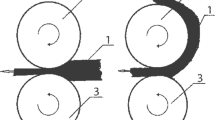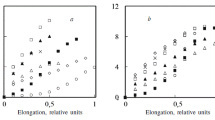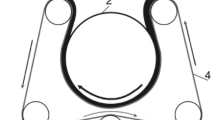Abstract
Incorporation of a bicomponent fibre in needle-punch materials and then treating them with heat by different methods results in a significant increase in their compressive strength. The compressive strength of needle-punch and modified materials is a function of the size and orientation of the fibre bundles. Increasing the needle-punching density does not significantly increase the compressive strength of the materials.
Similar content being viewed by others
References
G. Mukhamezhdanov and Yu. Pudov, Tekhn. Tekstil’, No. 3, 9–11 (2002).
A. Fomin, Yu. Perkov, and G. Mukhamezhdanov, Tekhn. Tekstil’, No. 8, 6–7 (2003).
A. V. Genis, L. N. Khaseleva, and K. O. Korovitsyn, Khim. Volokna, No. 1, 34–36 (1986).
V. E. Gusev and G. L. Barabanov, Tekst. Prom-st’, No. 3, 52–54 (1970).
A. V. Dedov, S. V. Babushkin, et al., Khim. Volokna, No. 1, 33–35 (2001).
M. Matsudaira and H. Qin, J. Text. Inst., 86, No. 3, 476–486 (1995).
Author information
Authors and Affiliations
Additional information
__________
Translated from Khimicheskie Volokna, No. 5, pp. 34–36, September–October, 2007.
Rights and permissions
About this article
Cite this article
Dedov, A.V. Needle-punch materials with high compressive strength. Fibre Chem 39, 397–399 (2007). https://doi.org/10.1007/s10692-007-0086-8
Issue Date:
DOI: https://doi.org/10.1007/s10692-007-0086-8




